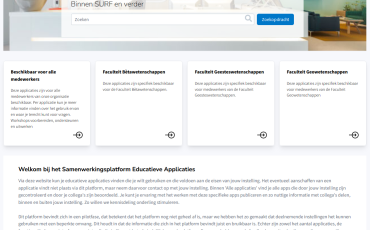Building towards the virtual classroom of the future
The outbreak of COVID-19 has forced the educational sector to adapt to online teaching promptly. In many ways, the virtual classroom creates a different dynamic and atmosphere for both teacher and student. This transition comes with its challenges. As remote learning becomes more and more essential in education, it is worth asking the question: How can we work towards an online environment that provides optimal support for teachers and students? In this blog, we cover a few present-day challenges and how we might battle them.
Would you like to join us in the concept and prototype development of the virtual classroom for the future? Then read on!
Concentration and adjustment issues amplify the need to act proactively
Influenced by their home situations, not all students experience this transition in the same manner. According to this article, we should focus on disadvantaged learners first because the digital literacy we expect to be present is not always there. In addition, the challenges your students could be facing are not always purely technical. Teachers around the world explain that they have noticed students struggle to adjust to a new routine and to not having companions around. The students are experiencing issues with concentration as well. It is easier to get distracted at home, and sitting still in front of a screen can also quickly get pretty tiresome. Online it is more difficult to notice confusion or boredom on students faces or in their body language. For a teacher, it is therefore important to act proactively. To improve the virtual classroom we should look at ways to improve the students' concentration by enabling teachers to act proactively.
Fantasy math game to increase engagement
Games and icebreakers were introduced to help students feel comfortable and to relieve some of the stress of online teaching. Other software like Microsoft Sway helps shape presentations through visual storytelling, or Prodigy Math, which sets up math problems inside a fantasy world game. Through these features, these companies aim to make school assignments more interactive.
Another challenge students struggle with, boredom, is tackled with the help of tools that improve online interaction between students and teachers, such as Kahoot or Mentimeter for online quizzes and FlipGrid for structured online video discussions. Besides, we have found in our research that teachers try to assess the level of concentration, by introducing small polls - 'do you need a break now or in 30 min' - or through weekly feedback forms, where teachers collect students' feedback which helps them to improve classes.
Moving beyond short-term solutions
Only some of the challenges of online learning can be battled with these features. Since Zoom is built as a business conference tool and not designed as a classroom, what are the next steps towards a better virtual classroom? We should work towards a digital environment that is shaped specifically for the learning flow of a student. As the education sector is adapting to a new blended model of learning, we aim to design the virtual classroom of the future together with teachers. A virtual classroom which must include features that help the teacher respond proactively and offers tools to improve students' concentration, planning and keep digital learning exciting. Features like eye movement tracking to help teachers assess whether students are tired or distracted, or a tool that predicts the level of boredom in the class so you know when to pause for an interactive quiz or game.
What would you like to see in this virtual classroom? Let's get in touch! Join our concept development brainstorms and help us create a prototype.
Andere communities
Auteur
Gerelateerde artikelen
-
 Digitale Leer- en Werkomgeving
Digitale Leer- en Werkomgeving -
 Digitale Leer- en Werkomgeving
Digitale Leer- en Werkomgeving -
 Digitale Leer- en Werkomgeving
Digitale Leer- en Werkomgeving
0 Praat mee